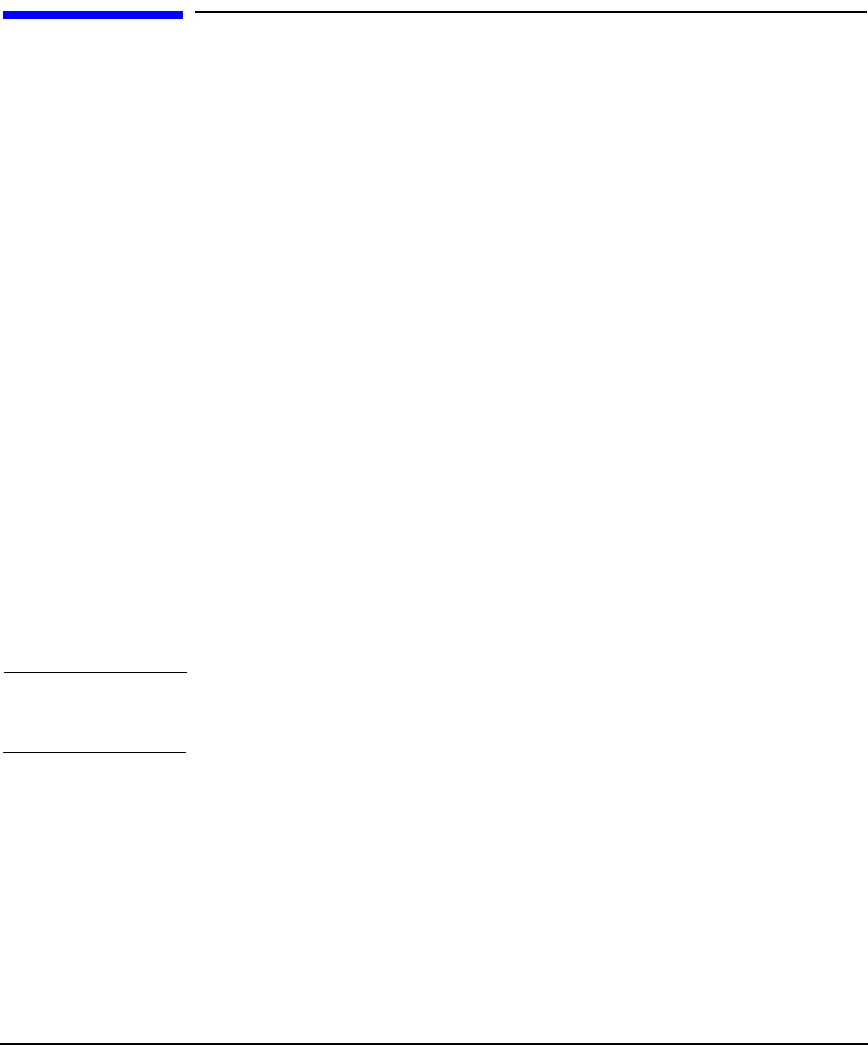HP-UX IPFilter A.03.05.13 Administrator's Guide: HP-UX 11i v3
Table Of Contents
- HP-UX IPFilter Version A.03.05.13 Administrator's Guide
- Legal Notices
- Table of Contents
- Preface: About This Document
- 1 Installing and Configuring HP-UX IPFilter
- Overview of HP-UX IPFilter Installation
- Step 1: Checking HP-UX IPFilter Installation Prerequisites
- Step 2: Loading HP-UX IPFilter Software
- Step 3: Determining the Rules for IPFilter
- Step 4: Adding Rules to the Rules Files
- Step 5: Loading IPFilter and NAT Rules
- Step 6: Verifying the Installation and Configuration
- Kernel Tunable Parameters
- Supported and Unsupported Interfaces
- Troubleshooting HP-UX IPFilter
- 2 HP-UX IPFilter on HP-UX 11i Version 3
- 3 Rules and Keywords
- IPFilter Configuration Files
- Basic Rules Processing
- IPFilter Keywords
- pass and block: Controlling IP Traffic
- in and out: Bidirectional Filtering
- quick: Optimizing IPFilter Rules Processing
- on: Filtering by Network Interfaces
- from and to: Filtering by IP Addresses and Subnets
- log: Tracking Packets on a System
- proto: Controlling Specific Protocols
- opt and ipopts: Filtering on IP Options
- icmp-type: Filtering ICMP Traffic by Type
- port: Filtering on TCP and UDP Ports
- keep state: Protecting TCP, UDP, and ICMP Sessions
- flags: Tight Filtering Based on TCP Header Flags
- keep frags: Letting Fragmented Packets Pass
- with frags: Dropping Fragmented Packets
- with short: Dropping Short Fragments
- return-rst: Responding to Blocked TCP Packets
- return-icmp: Responding to Blocked ICMP Packets
- dup-to: Drop-Safe Logging
- NAT Keywords
- 4 Dynamic Connection Allocation
- 5 Firewall Building Concepts
- Blocking Services by Port Number
- Using Keep State
- Using Keep State with UDP
- Using Keep State with ICMP
- Logging Techniques
- Improving Performance with Rule Groups
- Localhost Filtering
- Using the to
- Creating a Complete Filter by Interface
- Combining IP Address and Network Interface Filtering
- Using Bidirectional Filtering Capabilities
- Using port and proto to Create a Secure Filter
- 6 HP-UX IPFilter Utilities
- 7 HP-UX IPFilter and FTP
- 8 HP-UX IPFilter and RPC
- 9 HP-UX IPFilter and IPSec
- 10 HP-UX IPFilter and Serviceguard
- A HP-UX IPFilter Configuration Examples
- B HP-UX IPFilter Static Linking
- C Performance Guidelines
- Index

Firewall Building Concepts
Creating a Complete Filter by Interface
Chapter 584
Creating a Complete Filter by Interface
When you create a ruleset, you should set up rules for all directions and
all interfaces. The default state of IPFilter is to pass packets both in and
out. Instead of relying on the IPFilter default behavior, make every
ruleset as specific as possible, interface by interface, until all possibilities
are explicitly covered.
For example, if you have an IPFilter system with a lan1 interface, and a
lan0 interface, configure the following rules:
pass out quick on lan1
pass in quick on lan1
block out quick on lan0 from any to 192.168.0.0/16
block out quick on lan0 from any to 172.16.0.0/12
block out quick on lan0 from any to 10.0.0.0/8
pass out quick on lan0 from 20.20.20.0/24 to any
block out quick on lan0 from any to any
block in quick on lan0 from 192.168.0.0/16 to any
block in quick on lan0 from 172.16.0.0/12 to any
block in quick on lan0 from 10.0.0.0/8 to any
block in quick on lan0 from 127.0.0.0/8 to any
block in log quick on lan0 from 20.20.20.0/24 to any
pass in all
In this example, no restrictions are on traffic in and out on lan1. Traffic
has significant restrictions both in and out of lan0.
NOTE When setting up your ruleset, be sure that you add rules for all
appropriate directions and interfaces.










